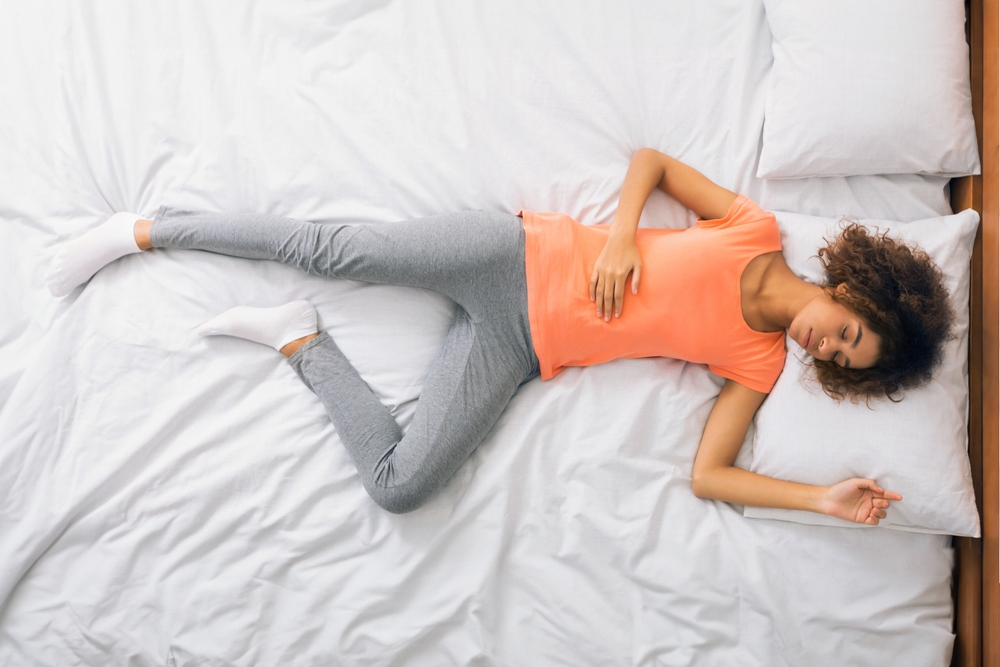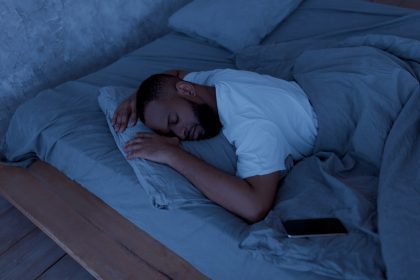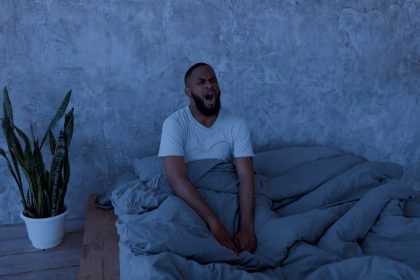The alarm blares at 6 a.m. after another night of restless sleep. You drag yourself out of bed, already exhausted before the day begins. If this scenario sounds familiar, the issue might not be how long you’re sleeping, but how well your sleep timing aligns with your body’s natural rhythms.
Recent advances in chronobiology, the study of biological timing systems, have revealed just how profoundly our internal clocks influence virtually every aspect of our physiology. From hormone release to body temperature, cognitive performance to digestive efficiency, these 24-hour cycles known as circadian rhythms orchestrate the intricate symphony of our biological functions.
The master clock and its messengers
At the center of this timing system sits a tiny cluster of about 20,000 neurons in the hypothalamus called the suprachiasmatic nucleus (SCN). This master clock receives direct input from light-sensitive cells in the retina, allowing it to synchronize with the external day-night cycle.
The SCN then coordinates timing throughout the body by triggering the release of hormones like melatonin and cortisol, while also sending neural signals that regulate temperature fluctuations and other physiological processes. This creates a predictable daily pattern of alertness, hunger, and sleepiness.
When lifestyle factors bring us out of alignment with these natural rhythms, a phenomenon chrono biologists call “circadian misalignment”, the consequences extend far beyond feeling tired. Research links chronic misalignment to increased risks of metabolic disorders, cardiovascular disease, mood disturbances, and compromised immune function.
The good news is that our circadian systems respond remarkably well to consistent behavioral cues. By understanding and implementing key practices, most people can significantly improve their alignment with their natural rhythms, often within just one to two weeks.
Practical tips for circadian alignment
Here are seven effective tips to help synchronize your daily habits with your internal clock.
Establish consistent light exposure patterns
Light is the most powerful signal for regulating circadian rhythms. Morning exposure to bright light, particularly sunlight with its rich blue wavelengths, helps set your clock for the day and promotes evening sleepiness.
Research indicates that 30-60 minutes of morning light exposure increases nighttime melatonin production by approximately 50%. For optimal effect, get outside within an hour of waking, even on cloudy days, as outdoor light is substantially brighter than indoor lighting.
Equally important is reducing evening light exposure, especially from blue-rich sources like smartphones and computers. Studies show that two hours of evening screen time can delay melatonin release by about 3 hours and reduce total production by 22%. Using blue-blocking glasses or device filters after sunset can significantly mitigate these effects.
Time your meals strategically
Your digestive system operates on a circadian schedule, with insulin sensitivity, gastric emptying, and metabolic efficiency all varying throughout the day. Recent research in chrono nutrition suggests that eating in alignment with these rhythms improves both sleep quality and metabolic health.
Finishing your last major meal at least 3 hours before bedtime allows digestive processes to wind down before sleep. This timing reduces nighttime core temperature and minimizes sleep disruptions from digestive activity.
Morning meals are equally important for setting metabolic rhythms. Consuming breakfast within an hour of waking helps synchronize peripheral clocks in the liver and pancreas with your central clock, reinforcing your overall circadian alignment.
Optimize your sleep environment
Environmental factors significantly impact circadian entrainment. Keeping your bedroom cool (between 65-68°F/18-20°C) aligns with your body’s natural pre-sleep drop in core temperature.
Complete darkness during sleep hours supports maximum melatonin production. Studies measuring melatonin levels show that even dim light, as low as 8 lux, equivalent to a night light, can suppress melatonin by up to 50%. Blackout curtains, removing electronic devices with status lights, or using a sleep mask can create the darkness your circadian system expects.
Minimizing noise or using consistent background sounds can prevent the sleep disruptions that fragment your rhythm. Earplugs or white noise machines allow the brain to maintain its natural overnight cycling between sleep stages.
Develop a consistent sleep-wake schedule
Regularity reinforces circadian rhythms. When you sleep and wake at consistent times, even on weekends, your body’s internal clock strengthens, improving sleep quality and daytime alertness.
Sleep researchers recommend maintaining no more than a one-hour difference between weekday and weekend sleep-wake times. This consistency prevents “social jet lag”, the misalignment that occurs when weekend schedules differ dramatically from weekday routines.
For those needing to shift their schedule, gradual changes of 15-30 minutes per day prove most effective. This measured approach allows your circadian system to adjust without the disruption that comes from sudden schedule changes.
Exercise with circadian awareness
Physical activity serves as another powerful zeitgeber (time-giver) for circadian rhythms. Morning exercise, particularly outdoors, reinforces wakefulness cycles through both light exposure and the acute increase in body temperature.
For those struggling with falling asleep, research indicates that early evening exercise, completed at least 3 hours before bedtime, can promote sleep onset by capitalizing on the subsequent post-exercise drop in core temperature. This temperature decline mirrors the natural pre-sleep cooling that signals your body to prepare for rest.
Chrono biologists generally advise against high-intensity exercise within 2 hours of bedtime, as the stimulatory effects can delay sleep onset in most individuals. However, gentle stretching or yoga specifically designed for relaxation appears beneficial for pre-sleep routines.
Manage caffeine and alcohol with timing precision
Caffeine has a half-life of approximately 5-6 hours in most adults, meaning half the caffeine from your 2 p.m. coffee still circulates in your bloodstream at 8 p.m. This stimulant directly interferes with adenosine, a key sleep-promoting compound that naturally accumulates during wakefulness.
Studies using objective sleep measures show that consuming caffeine even 6 hours before bedtime reduces total sleep time by more than 1 hour in average adults. For optimal alignment, circadian specialists recommend consuming your last caffeine before 2 p.m.
Similarly, while alcohol may initially induce sleepiness, it substantially disrupts sleep architecture as it metabolizes. Evening alcohol consumption reduces REM sleep and increases nighttime awakenings. Limiting alcohol to earlier evening hours and remaining well-hydrated helps minimize these disruptive effects.
Create a wind-down ritual
Your brain requires transition time between daytime alertness and nighttime rest. Establishing a consistent 30-60 minute pre-sleep routine signals your circadian system that sleep time approaches.
Effective wind-down activities include reading physical books (not e-readers with backlit screens), gentle stretching, warm showers, or writing in a journal. These activities initiate the parasympathetic “rest and digest” response that prepares both mind and body for sleep.
Temperature manipulation can enhance this transition. Research demonstrates that warming the body with a hot shower or bath followed by entering a cool bedroom accelerates sleep onset by working with your body’s natural pre-sleep temperature regulation.
Customizing for your chronotype
While these recommendations apply broadly, individual variations in circadian timing, known as chronotypes, influence their implementation. Approximately 40% of adults skew toward earlier schedules (morning larks), 30% toward later timing (night owls), with the remainder falling between these extremes.
These differences appear genetically influenced and connect to variations in the PER3 and other clock genes. Rather than fighting your natural chronotype, chrono biologists recommend working within your genetic predisposition while maintaining consistency.
For night owls, this might mean selecting later work schedules when possible and being vigilant about morning light exposure to prevent further drift toward lateness. Morning types benefit from evening relaxation practices that prevent premature sleepiness from disrupting social activities.
Addressing circadian disruption in the modern world
Modern life presents significant challenges to circadian alignment. Shift work, international travel, and 24/7 connectivity all disrupt our biological timing systems. While perfect alignment may be impractical in some circumstances, targeted interventions can minimize the impact.
For business travelers crossing time zones, timed light exposure, brief naps, and strategic melatonin use can accelerate adaptation to new time zones. Sleep specialists suggest that traveling eastward typically requires more deliberate adjustment strategies than westward travel, as most people’s internal clocks more easily accommodate a lengthened rather than shortened day.
Those working night shifts face particular circadian challenges. While complete adaptation rarely occurs, consistent scheduling, blackout curtains for daytime sleep, and light therapy can help establish a more functional rhythm. Some research indicates that intermittent fasting protocols synchronized with work schedules may also help shift metabolic rhythms to support these inverted schedules.
The broader implications of rhythm alignment
The benefits of improved circadian alignment extend far beyond better sleep. Research increasingly connects rhythm stability to metabolic health, cognitive performance, and even emotional regulation. Some chrono biologists now argue that circadian alignment represents one of the most underappreciated aspects of preventive health care.
As our understanding of circadian biology continues advancing, personalized approaches based on genetic testing and circadian monitoring may eventually become standard practice. Until then, implementing these evidence-based strategies offers a reliable path toward better alignment between modern lifestyles and ancient biological rhythms.
By honoring the body’s clock, we can transform our relationship with rest and bring ourselves back into harmony with the fundamental rhythms that have governed human biology for millennia.

















